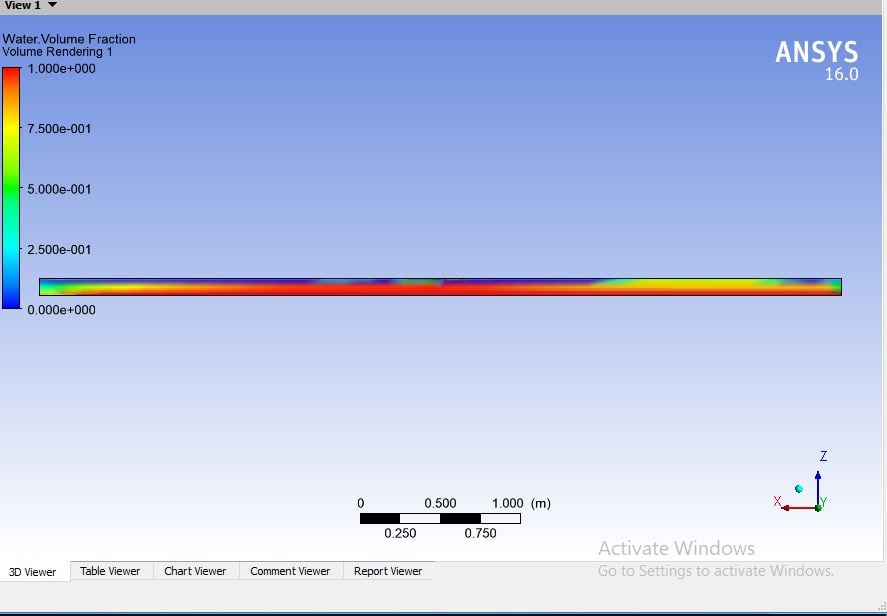-
-
January 24, 2019 at 8:20 am
amina
SubscriberHelo,
Hope you all are doing well,
Actually i have a simple geometry in which a box consist of (5 m length 0.7 m width 0.1 m height) and a cylinders which is installed in a box at a distance of 2.5 m ( 46 Number of cylinders in staggered arrangement )
Mesh= tetrahedrons
my fluid domain consist of two phases ( water and air ) and i want to calculate velocity profiles and water depth in front of cylinders. what are the values of time step size, number of time step sizes , Max iterations/time step that my solution will easily converged.how i will calculate these values any formula??
i want to show the picture of some results but that results seems not good.In this picture the fluid domain full consist of water but i have entered both the values of air and water as well.
Does anyone know how can i get correct air water interaction in domain by entering the correct values of time step size so that my solution is easily converged ?
Thank you in advance
-
January 24, 2019 at 9:59 am
Rob
Forum ModeratorPlease can you put in some images of the fluid domain: from that angle I can't tell if it's got much depth (or mesh) in the z direction (assuming that's up).
You'll want the open channel flow models in Fluent and VOF. There are a few YouTube videos around which explain this. I would also strongly recommend downloading the current version of the software as there has been a lot of work done on the multiphase models since R16.0 (we're on R19.2 at present). For time step size aim for a Courant Number of around 0.1 to 0.2 and adjust from there depending on convergence.
-
January 24, 2019 at 10:42 am
amina
Subscriberthank you sir for consider my problem
here is the pictures i attached for your information to understand the problem
figure 1 ( I used these values for run calculations but still my solution is not converged)
Time step size = dXy/v ( y=minimum cell size & v=velocity of flow ( water inlet velocity)
Number of time steps = i dont know how to calculate so i assume 300
Max iterations/time step = time step size * Number of time steps
Figure 2 & 3
-
January 24, 2019 at 10:46 am
amina
Subscriberkindly tell me what is courant number is this value is related to my case study because i think this number is related to density based solver (steady state) but my case study involve pressure based (transient state)
-
January 25, 2019 at 3:44 pm
Amine Ben Hadj Ali
Ansys EmployeeVery poor mesh. Please increase quality and resolution. Please check this tutorial for open channel flows. The characteristic time scale for your rul will depend on flow velocities, surface tension, compressibility, gravity. You can just use VOF with adaptive time stepping and keep global CFL as low as possible (say 2). For really fully implicit problems (with implicit VOF) a courant number of 10 is even acceptable.
https://www.youtube.com/watch?v=GU_4HNHVsDY
-
- The topic ‘How to calculate 1 (time step size) 2 (number of time step sizes) 3 (Max iterations/time step) ?’ is closed to new replies.



-
4633
-
1535
-
1386
-
1225
-
1021

© 2025 Copyright ANSYS, Inc. All rights reserved.











